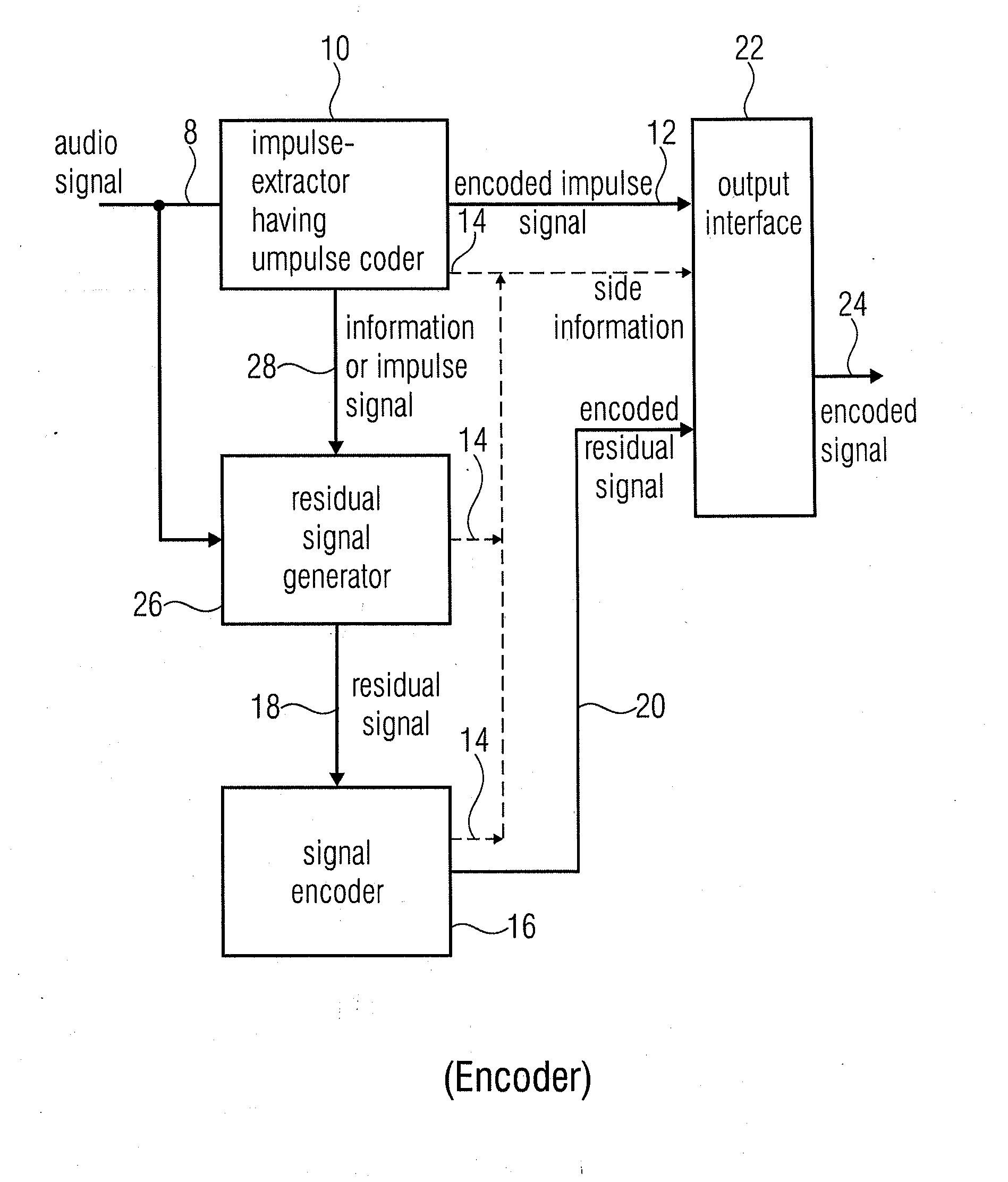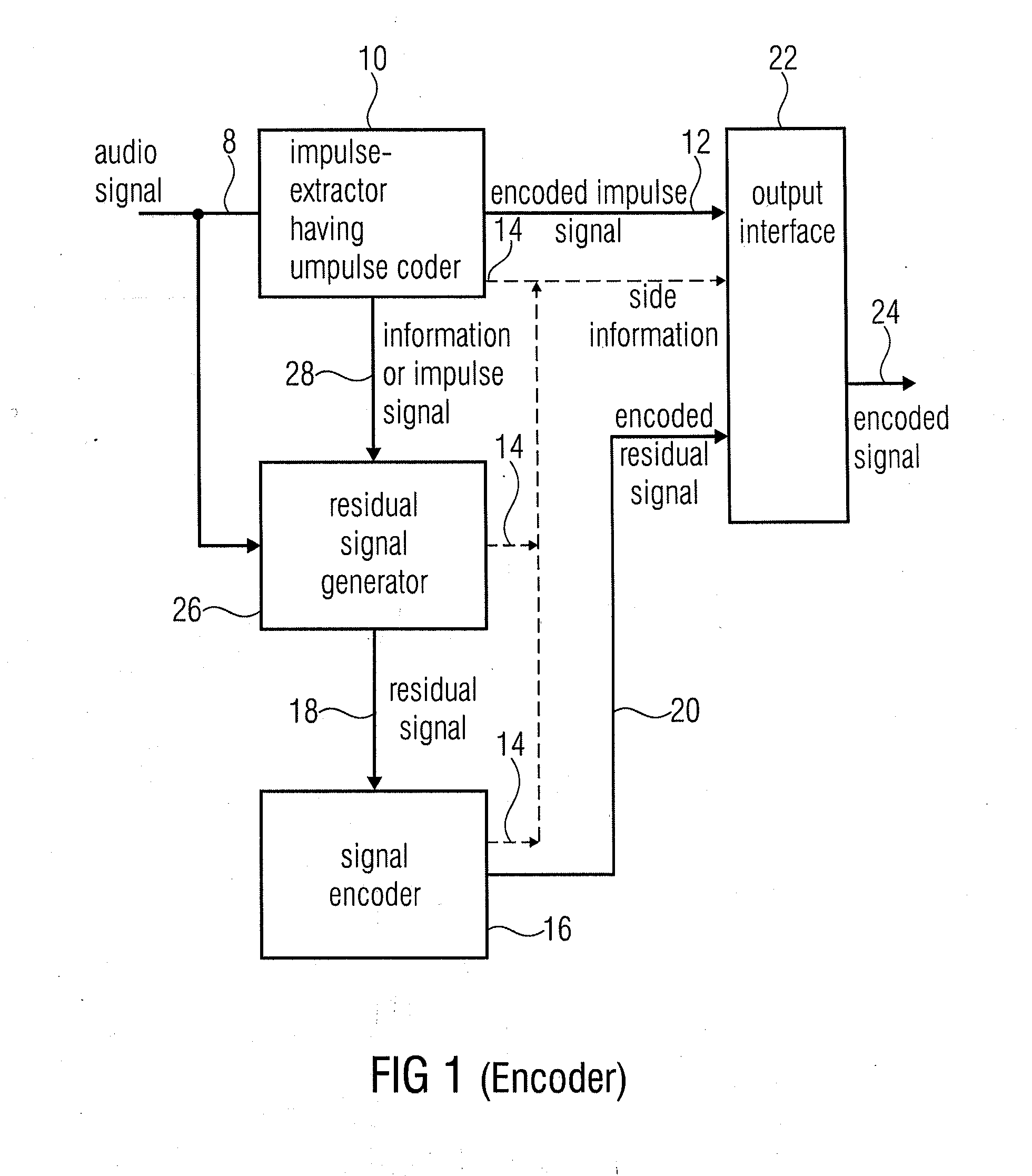Audio encoder for encoding an audio signal having an impulse-like portion and stationary portion, encoding methods, decoder, decoding method, and encoding audio signal
a technology of audio signal and encoder, applied in the field of source coding, can solve the problems of lpc-based speech coder, lpc-based speech coder, aac-based speech coder, etc., and achieve the effect of high efficiency, high quality audio encoding concept, and high efficiency
- Summary
- Abstract
- Description
- Claims
- Application Information
AI Technical Summary
Benefits of technology
Problems solved by technology
Method used
Image
Examples
Embodiment Construction
[0098]It is an advantage of the following embodiments to provide a unified method that extends a perceptual audio coder to allow coding of not only general audio signals with optimal quality, but also provide significantly improved coded quality for speech signals. Furthermore, they enable the avoidance of problems associated with a hard switching between an audio coding mode (e.g. based on a filterbank) and a speech coding mode (e.g. based on the CELP approach) that were described previously. Instead, below embodiments allow for a smooth / continuous combined operation of coding modes and tools, and in this way achieves a more graceful transition / blending for mixed signals.
[0099]The following considerations form a basis for the following embodiments:
[0100]Common perceptual audio coders using filterbanks are well-suited to represent signals that may have considerable fine structure across frequency, but are rather stationary over time. Coding of transient or impulse-like signals by fi...
PUM
 Login to View More
Login to View More Abstract
Description
Claims
Application Information
 Login to View More
Login to View More - R&D
- Intellectual Property
- Life Sciences
- Materials
- Tech Scout
- Unparalleled Data Quality
- Higher Quality Content
- 60% Fewer Hallucinations
Browse by: Latest US Patents, China's latest patents, Technical Efficacy Thesaurus, Application Domain, Technology Topic, Popular Technical Reports.
© 2025 PatSnap. All rights reserved.Legal|Privacy policy|Modern Slavery Act Transparency Statement|Sitemap|About US| Contact US: help@patsnap.com



